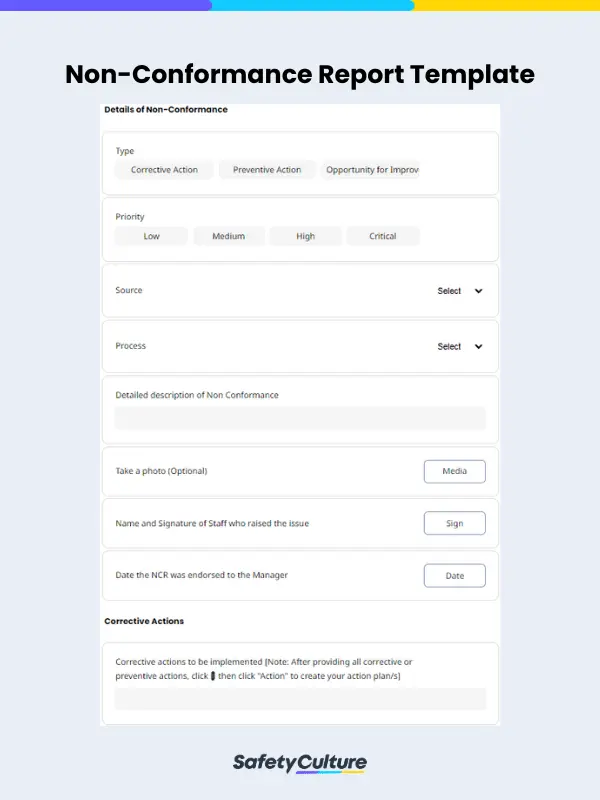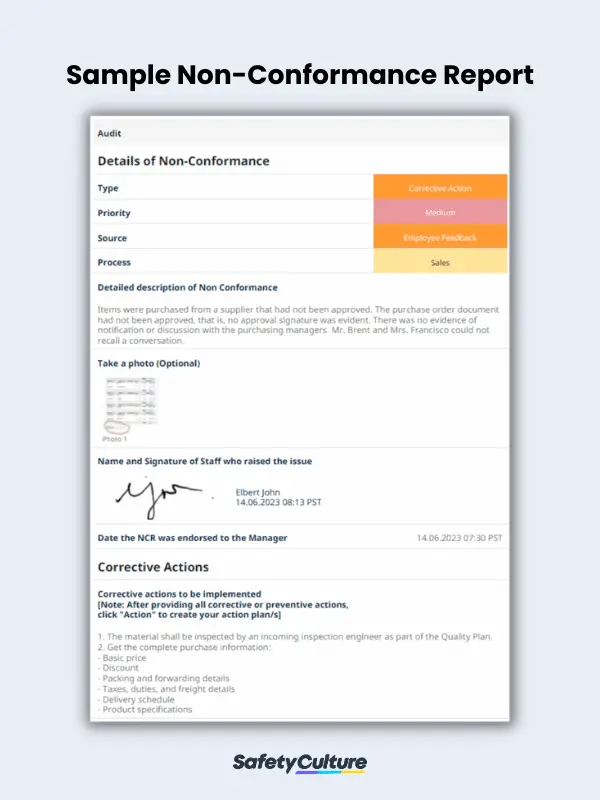What is a Non Conformance Report?
A Non-Conformance Report (NCR) is a document commonly used in construction industries to document work that has not met required quality standards. These reports are an essential part of the quality control process and aim to mitigate risks by implementing corrective actions and preventing similar situations from recurring.
What is a Non Conformance Report Template?
A non-conformance report template is a tool used by project managers, workers, and supervisors to record any non-compliance or plan deviation, how it occurred, and corrective measures to prevent similar events from recurring. It’s also used in determining a resolution with a client and documenting any corrective changes applied.
Serving as a guide for documenting the necessary information related to the non-conformance reported in a consistent and organized manner, this template aims to standardize the process of reporting while leaving room for customization depending on the needs and requirements of various industries and projects.
Benefits of Using a Template for Non Conformance Reports
One of the biggest benefits of using a non-conformance report template is that it allows the tracking and monitoring of products and processes which can then help with identifying and proactively correcting any issues before they become bigger problems. From a business perspective, on the other hand, non-conformance reports can help better understand customers and their needs.
Apart from those, organizations can achieve the following benefits of improved non-conformance reporting using templates:
- Streamlined identification, reporting, and communication of quality issues
- Comprehensive analysis and improvement efforts
- Enhanced consistency and completeness of non-conformance reports
- Effective quality management
- Sustainable establishment of a culture of accountability and corrective action
What are the Main Sections of a Non Conformance Report Template?
An effective non-conformance report form template fundamentally contains these 4 key elements:
- Detailed observation of the non-conformances
- Corrective actions to be implemented
- Rectification process
- Closure of the case
What Should be Included in a Non Conformance Report?
Non-conformance reports serve as a document for detailing any issue or discrepancy found in current processes, tracking the cause of the non-conformance, as well as recording any corrective actions that need to be taken to rectify the discrepancy.
It’s important to note that the items found in one can vary depending on the business or industry that the organization belongs to. The most common items that can be found on a non-conformance report are the following:
- Title page, report number, department, and company/site location
- Product name and description
- Date and the lot number
- Type of non-conformance and the corresponding corrective action/s taken
- Names and signatures of the person who raised the issue and verified the report
Examples of Non Conformance and Non Compliance in the Workplace
Non-conformance and non-compliance in the work setting refer to situations wherein an individual fails to follow stated rules or regulations, fails to show proper conduct within the organization, or fails to meet certain quality standards. Some common examples of such include the following:
- Disregard for health and safety regulations (e.g., wearing proper Personal Protective Equipment)
- Failure to conduct required safety inspections or ignoring safety procedures
- Refusal to act according to the code of conduct (e.g., disrespecting colleagues, harassing customers or colleagues)
- Inconsistent or incomplete product and process documentation
- Equipment or machinery breakdowns, out-of-specification performance, or failure to meet maintenance requirements of valuable assets
- Showing up late
- Failure to submit or finish tasks in time
- Taking on work tasks without the proper certification or training
FAQs About Non-Conformance Report
Non-conformances must be reported whenever an event takes place on a construction site that does not align with the relevant guidelines and policies. Non-conformance reports serve as a preventative measure by identifying potential problems that could negatively impact the project, site, or workers.
All employees are encouraged to report any non-conformances to their supervisors, safety officers, or other relevant personnel. Following the practice of standardizing the use of a non-conformance report format promotes accountability across the organization and ensures that everyone is working together to maintain a safe work environment.
A corrective action report is typically prepared in response to a reported non-conformance. It outlines the steps taken to rectify the issue, details the implemented actions, and provides recommendations to prevent the problem from recurring in the future.




